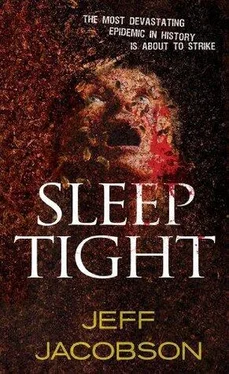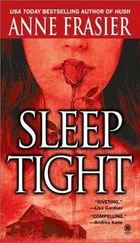“Yes and no,” Roger said while checking the other side of the bed. “DDT nearly wiped them out fifty years ago, but of course, to the benefit of humanity”—he had a quiet laugh with himself—“that’s been banned. Most of the bugs they’ve tested show signs of immunity anyway. Bedbugs are awfully . . . resilient. The main problem with pesticides is that even if you find one that works, all you’re doing in a building like this is driving them from one room to another, or one floor to another. They can fit anywhere.”
“A building like this? Are you kidding? This floor was just completed two weeks ago! This entire building is brand new!” Mr. Ullman was starting to take the infestation personally.
The Serenity was Chicago’s latest luxury hotel, inhabiting an entire city block, stretching from Washington to the south to Randolph on the North Side, and Dearborn to State, west to east. Much of the space near the streets had been carefully landscaped, layered with reflection pools and birch trees. The building itself was triangle shaped, both in footprint and profile. It rose one hundred and thirty-four floors above the city, culminating in a great sweeping point at the top. The leading edge of the building faced the lake, flanked on both sides by curving slabs of gray windows. The locals had immediately dubbed it “The Fin,” as in a shark’s dorsal fin, to the dismay of the owners and Mr. Ullman.
Mr. Ullman kept trying to get the exterminator to understand the true significance of the hotel. “We have been in the news practically every day for weeks now. It has all been carefully orchestrated, I can assure you. Surely, you heard about the charity ball last night? Everyone in town was here.”
Roger considered this. He spread his hands apart in a helpless gesture. “If this building is so new, then why would it have so many bugs?”
Mr. Ullman licked his lips, then pressed them together so tightly they almost disappeared. He did not want to discuss the matter. “I think you will understand our need for discretion. We had a . . . situation, where we discovered that a group of homeless people had been hiding in the unfinished sections near the roof, and using these rooms to sleep in at night. We scrubbed and fumigated everything, of course.”
“Of course.”
“I can only assume . . .” Mr. Ullman gestured helplessly. They contemplated the room in silence, until finally Roger felt compelled to say something, anything. “Yes, well. The problem is that once they are established, it can be very difficult to eradicate them. The females lay an average of up to five eggs per day when they’ve had a good meal. That’s over two hundred eggs in their lifetime. And the babies are ravenous. That’s what I’m assuming we have here. Bedbugs molt five times before reaching adulthood. That’s why I’m finding so many exoskeletons.”
Roger slid the entire bed away from the wall and shined his light behind the headboard. “Aha! Here we go.” He produced a pair of tweezers and held it up for the manager. Up close, it wasn’t exactly menacing. The little bug was about the size of an apple seed. Six feeble legs waved about helplessly.
“Yes, yes,” Mr. Ullman said. “Fine. But now what do we do?”
Roger dropped the bug in a specimen vial and secured it in the chest pocket of his uniform. “To be absolutely sure, I would recommend clearing out every piece of furniture in these rooms and destroying them. Start over. At the very least, dispose of all the mattresses, the couches, the easy chairs. Anything with padding and fabric.”
Mr. Ullman was aghast. “Are you joking? Do you have any idea of what this couch cost? More than your annual salary, I’m guessing. That chair? Hand built in Italy. The mattress alone cost over fourteen thousand dollars for God’s sake. Are you seriously saying there is no chemical that we can use to kill these things?”
Roger shook his head. “The amount you’d have to use would destroy the furniture. Heat can kill these things, but again, you’d risk ruining the furniture.” He thought for a moment. “Bedbugs can live up to a year without eating. But they have very weak jaws. They’re just tubes, really, one for injecting you with their saliva, which contains both an anesthetic and an anticoagulant, and the second one sucks out your blood. Fascinating stuff, really when you—”
“I’m sure it is. You were saying.”
“Well, they can’t chew through much of anything. Not like your cockroach, let me tell you. It’s not hard to trap them. If you could get by without all this furniture for some time . . . some considerable time . . . you could seal everything in plastic sheeting. Then we could go through the rooms, sealing every crack and crevice with clear silicone.”
“Would that solve the problem?”
“You would have to store them for over a year.”
“So I could theoretically not dispose of these, and claim it on insurance?”
“If you have bedbug insurance.”
Mr. Ullman studied his spotless shoes. “It was overlooked.”
“I don’t know if your insurance will pay for it or not, but if you seal this furniture and this mattress and box springs, the rest of the bed too, just to be sure, then, yes, I think it would take care of the problem.”
“As soon as possible, get it done.”
The furniture was encased with industrial-strength plastic wrap and sealed with clear plastic sheets, to be on the safe side. All of it, the couches, the chairs, the mattresses, were triple sealed in duct tape. The workmen rolled it away to the freight elevators while more exterminators arrived to seal the cracks between the floors and the walls, all electrical outlets, light fixtures, and anywhere else a dime could fit sideways. The carpets were steam cleaned again and again, and inch-wide double-sided tape encircled the inside of every vent.
The furniture was taken to the basement, where it was wheeled past the massive clothes washers and dryers, then carried down the stairs through the narrow walkways between massive pipes and various industrial machines, down into the third level of the sub-basement. The concrete here had been slapped against the crumbling walls that linked tunnels under the Washington and Lake train stations. They pried open a steel door at the far end, and packed the furniture inside a room the size of small church. The door was padlocked, sealed with duct tape, and promptly forgotten by the staff.
It took only a few seconds for the noise from the workers to diminish and disappear completely. Thirty minutes later, the first rat squirmed into the room from a crack in the far wall and sniffed the furniture. In three days, the rats began to build a nest. They tore through the plastic like a toddler going after a sliver of cake wrapped in Saran Wrap, digging into the soft underbelly of the cushions and mattresses.
The bedbugs grew aware of the new blood and crawled out to feed on the sleeping rats. As the rat nest grew, so did the bug population. The bedbugs encountered the bat bugs inside of the second week.
Bedbugs and bat bugs are so similar that each species can only be distinguished by microscopic examination. Inevitably, some of the male bedbugs attempted to mate with the bat bugs. The males crawled over the bat bugs, stabbing the females in the abdomen with their hypodermic genitalia, filling the body cavity with sperm. All but one of the traumatic inseminations produced sterile offspring. This one female found a quiet spot inside one of the expensive mattresses and laid three sticky white eggs. Fourteen days later, the eggs hatched.
All three bugs carried the virus.
PHASE 2
CHAPTER 13
11:07 AM
April 14
When the seasons change in Chicago, the transformation can be startling. Bare branches become lush and vibrant; trees seem to appear out of nowhere. Bushes flourish like a happy cancer, hiding garbage and cracked foundations. Grass turns green overnight. Even the air smells different, as if it were being piped in from somewhere down south.
Читать дальше












